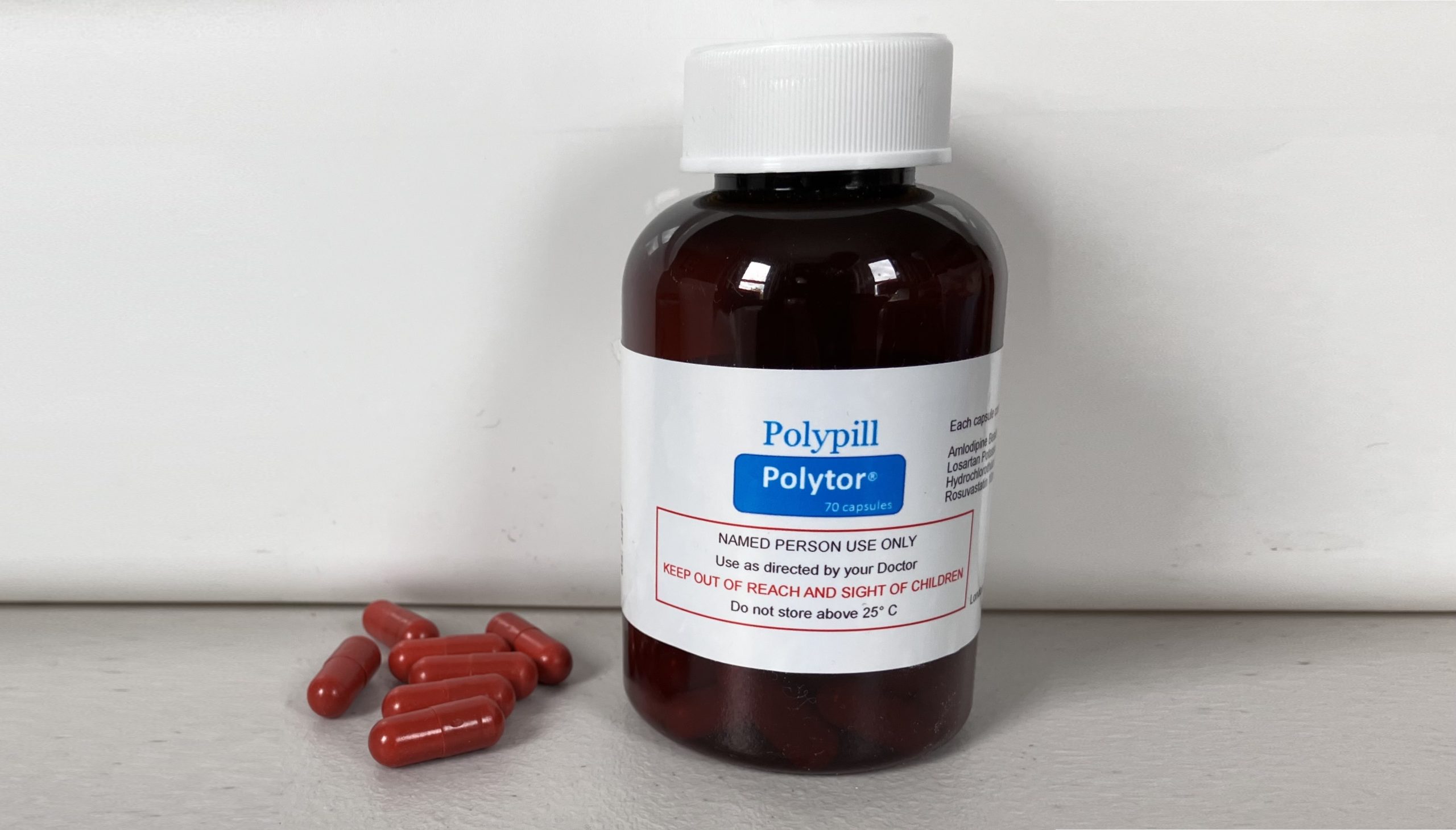 David Misselbrook is a retired GP
David Misselbrook is a retired GP
Imagine a world-class epidemiologist identifying the most powerful predictive risk factor for vascular disease. Ninety-five per cent of vascular disease occurs in the presence of this non-modifiable risk factor, which exists in about 40% of the UK population (spoiler alert — it’s being over the age of 50!). But imagine also there was an intervention that will reduce that risk by 72%.1,2 The intervention takes less than a minute every day — quicker than cleaning your teeth — and done at scale would be safe and as cheap as chips. Imagine that existing good-quality evidence showed that it is 10 times more effective than the current NHS Health Check programme, without needing to calculate QRISK scores.3
… this was announced in a special edition of the BMJ in 2003 and followed up with increasingly solid evidence ever since.
And imagine that this was announced in a special edition of the BMJ in 2003 and followed up with increasingly solid evidence ever since.4,5 And imagine that the NHS still does not use or promote this intervention.
But also imagine that this prevention is available privately on an ‘at cost’ basis. And an ever increasing number of doctors and medical scientists are signed up (declaration of interest: myself included), but very few of the general population know about this.
Yes, I am talking about ‘the polypill’. The majority of people having a first MI will have a QRISK score below the level recommended for current primary preventive treatment. But, as stated, 95% of MIs occur in over-50s. The most powerful predictor of MI and stroke is age.6 The polypill uses a low dose of three different antihypertensive drug classes combined with a standard dose of statin.a Because of the low doses of each agent, no monitoring is needed. No obsessional follow-up BP checks tracking minor changes. No U&Es, no LFTs, no lipid levels. No QRISK scores. On these doses, side effects are uncommon and serious side effects rare.
While QRISK scores are good at predicting population risk, they are of little use (except for the most exceptionally high scores) in predicting individual risk. And it is individual risk that matters to the patient. So give up QRISK and all the futile paraphernalia that follows and just reduce the risk for everyone over 50 who wants it.
The evidence shows that, for 1000 people over their lifetime, the Polypill Prevention Programme would on average give 316 individuals an extra 8 years of life without a heart attack or stroke, amounting to an extra 2528 life years in total. Two-hundred-and-sixty of the 1000 would take the polypill with no benefit.7 Compare this with published estimates of uptake and adherence in the current NHS Health Check Programme, where in practice only 24 cases per 1000 are currently benefiting (instead of a potential 287), amounting to 96 life years gained without a heart attack or stroke. This remarkable contrast is in part due to the much simpler methodology and greater adherence to the Polypill programme compared with the NHS Health Check programme.8
So why is the polypill not on offer via the NHS?
So why is the polypill not on offer via the NHS?
First, there is the fear of inappropriate medicalisation. But we vaccinate our children. We brush our teeth. We drink fluorinated water. We oldies buy vitamin D from the supermarket in the winter. I have been known to go to the gym. So which represents less medicalisation? To have repeated health checks and biomarker measurement or just to take a safe polypill once a day via a public programme for all over-50s who want it?
Second, Professor Sir Nicholas Wald (who discovered the role of folic acid in preventing neural tube defects) and Professor Malcolm Law, who jointly described the polypill concept in 1999, were determined not to let this become just another cash cow for Pharma. They patented the idea using cheap generic constituents. They make it available at cost via the Polypill Prevention Programme (https://polypill.com/). (Unfortunately at present it is not cheap because of the small uptake with the combination capsules made up on special order.) So there has been no Pharma money to support public implementation or promotion of the polypill.
And perhaps, most of all, the polypill combination is not yet a licensed medicine in the UK, despite the individual ingredients being licensed and well known. (The Polypill Prevention Programme prescribes it privately as an unlicensed ‘special’ medication.) It is not in the BNF and is not in any NICE pathway. This is frankly crazy, but reflects the institutional hurdles in getting a new product through the regulatory maze without the backing of ‘Big Pharma’.
I am writing this following a seminar organised by Professor Wald to find ways to overcome these institutional problems. But we should be more aware of this available primary prevention tool right now. Doctors led the way in stopping smoking once the evidence was clear. Perhaps when more doctors wake up to the benefits of the polypill then institutional hurdles may start to disappear. Just follow the evidence.
In the meantime I will just carry on taking my polypill.
aThe current standard polypill contains hydrochlorothiazide 12.5 mg, amlodipine 2.5 mg, losartan 25 mg, and rosuvastatin 10 mg, all in a single capsule, one nocte.
Competing interests: I have taken the polypill via the Polypill Prevention Programme for over a decade. I have no financial interest in the polypill.
References
- Huffman MD, Xavier D, Perel P. Uses of polypills for cardiovascular disease and evidence to date. Lancet 2017; 389(10073): 1055–1065.
- Wald NJ, Simmonds M, Morris JK. Screening for future cardiovascular disease using age alone compared with multiple risk factors and age. PLoS One 2011; 6(5): e18742.
- Wald NJ, Hingorani AD, Vale SH, et al. Comparing screening based on the NHS Health Check and Polypill Prevention Programmes in the primary prevention of heart attacks and strokes. J Med Screen 2024; 31(2). DOI: 10.1177/09691413241235488.
- Wald NJ, Law MR. A strategy to reduce cardiovascular disease by more than 80%. BMJ 2003; 326(7404): 1419
- Rodgers A, Smith R. The polypill and medicines access: two decades and counting. BMJ 2023; 382: 1847.
- Wald NJ, Simmonds M, Morris JK. Screening for future cardiovascular disease using age alone compared with multiple risk factors and age. PLoS One 2011; 6: e18742.
- Wald NJ, Hingorani AD, Vale SH, et al. Comparing screening based on the NHS Health Check and Polypill Prevention Programmes in the primary prevention of heart attacks and strokes. J Med Screen 2024; 31(2): 59–65. DOI: 10.1177/09691413241235488.
- Webster R, Patel A, Selak V, et al. Effectiveness of fixed dose combination medication (‘polypills’) compared with usual care in patients with cardiovascular disease or at high risk: a prospective, individual patient data meta-analysis of 3140 patients in six countries. Int J Cardiol 2016; 205: 147–156. DOI: 10.1016/j.ijcard.2015.12.015.







You’ve persuaded me David! Very interesting
[…] Second, a drug needs ample financing and costly marketing to win acceptance. The polypill has neither. Third, although tens of Americans and our economy would benefit from better health and lower […]
[…] Second, a drug needs ample financing and costly marketing to win acceptance. The polypill has neither. Third, although tens of Americans and our economy would benefit from better health and lower […]
[…] Second, a drug needs ample financing and costly marketing to win acceptance. The polypill has neither. Third, although many Americans and our economy would benefit from better health and lower costs, […]